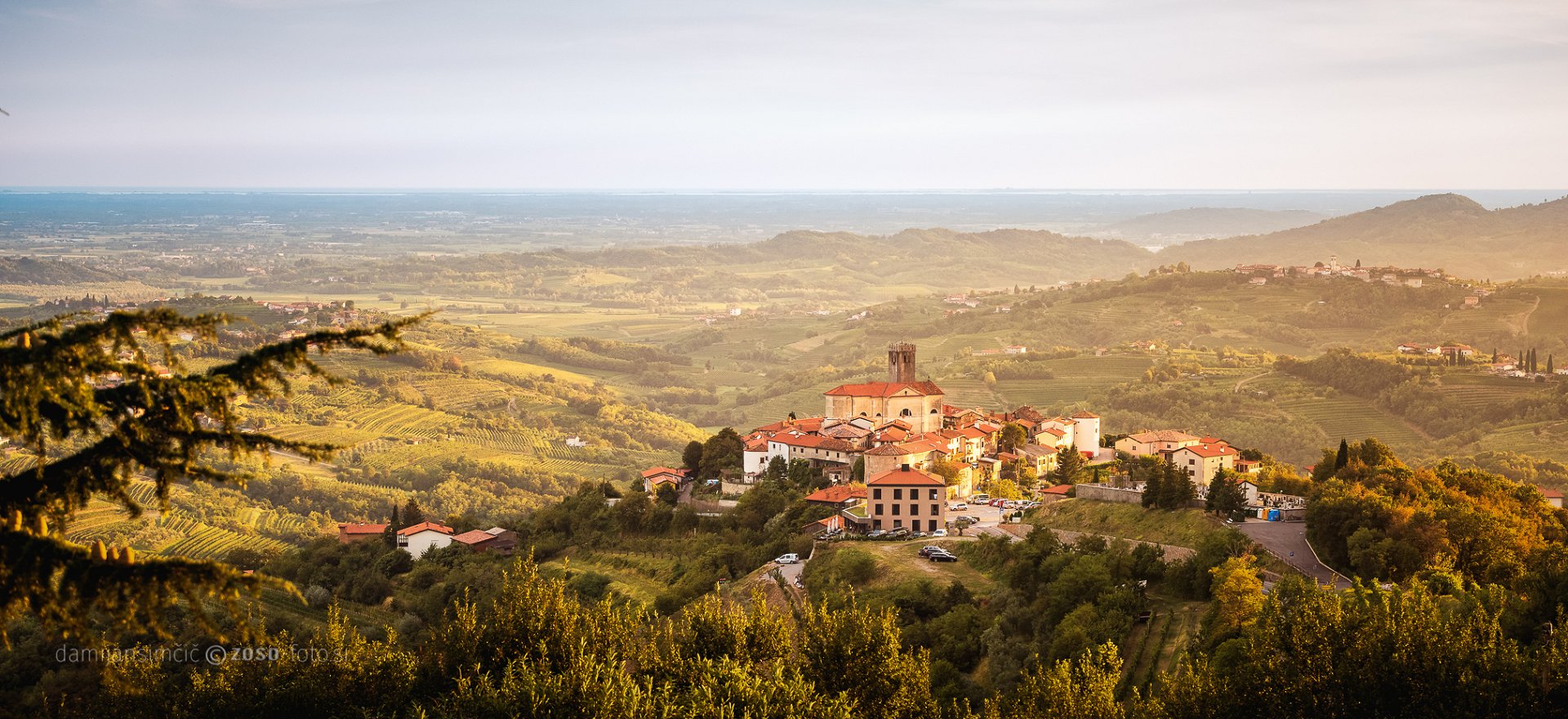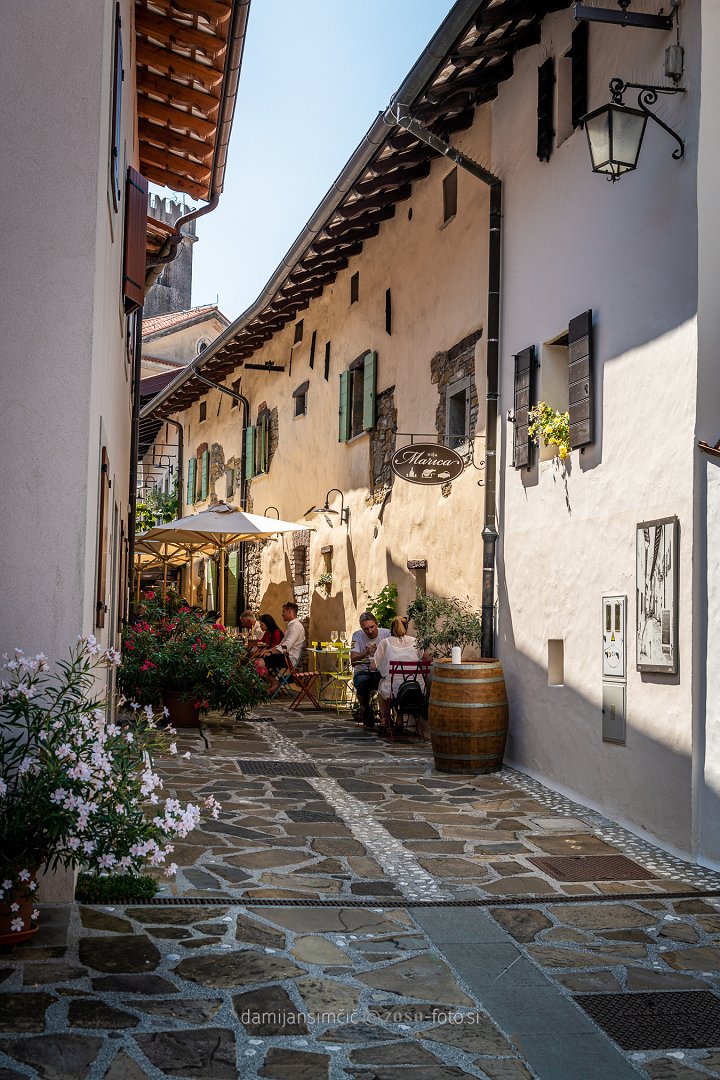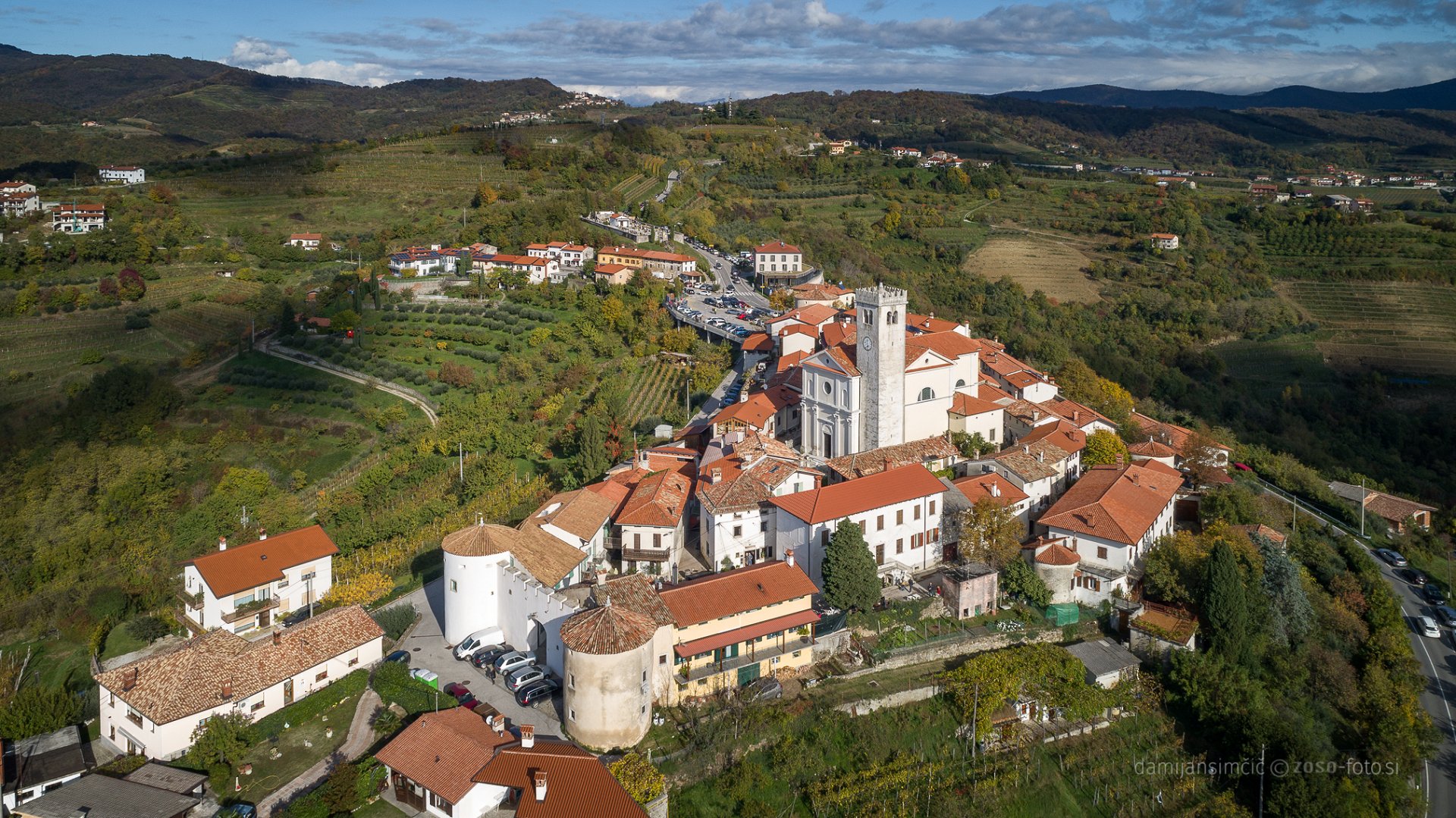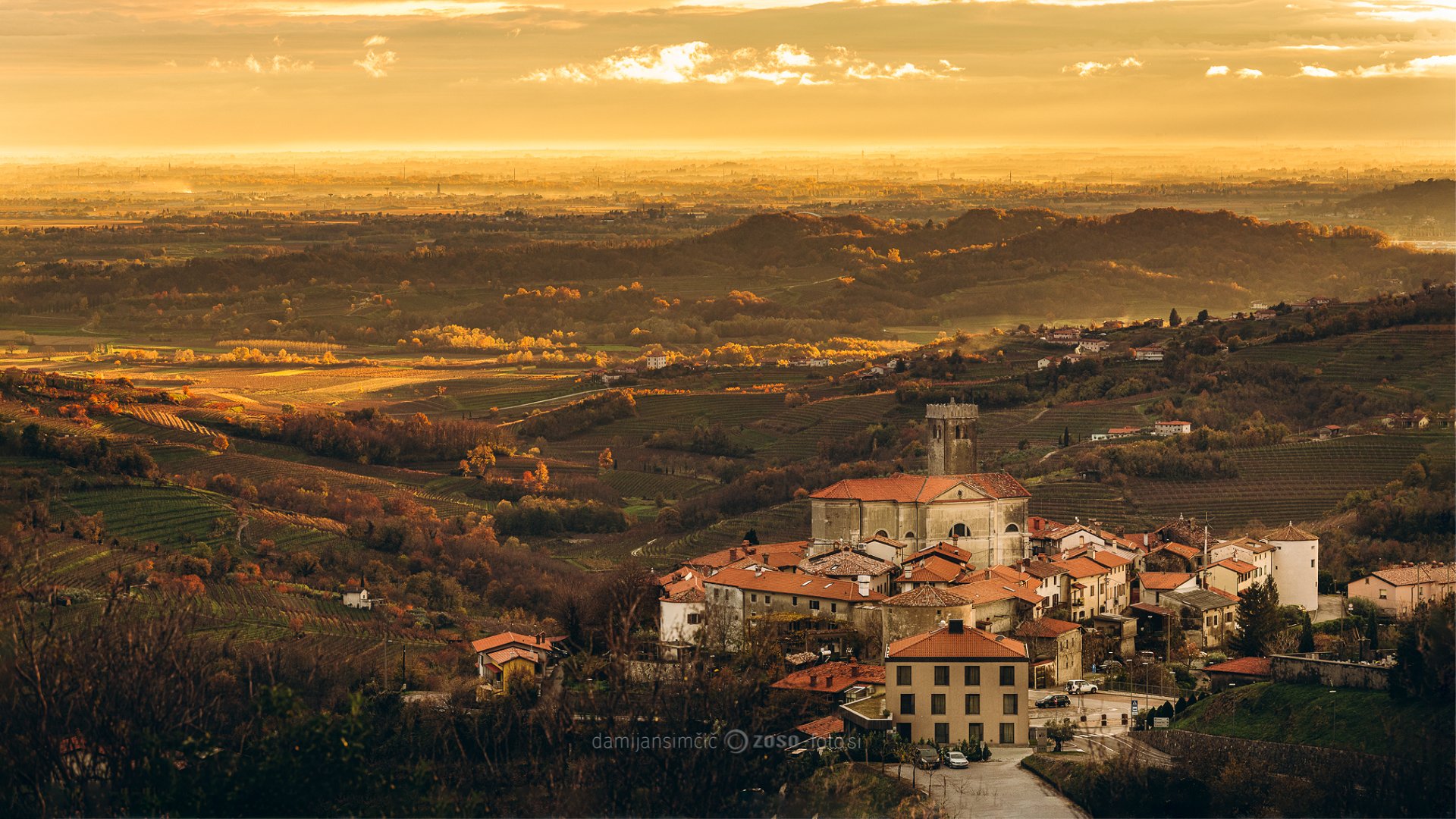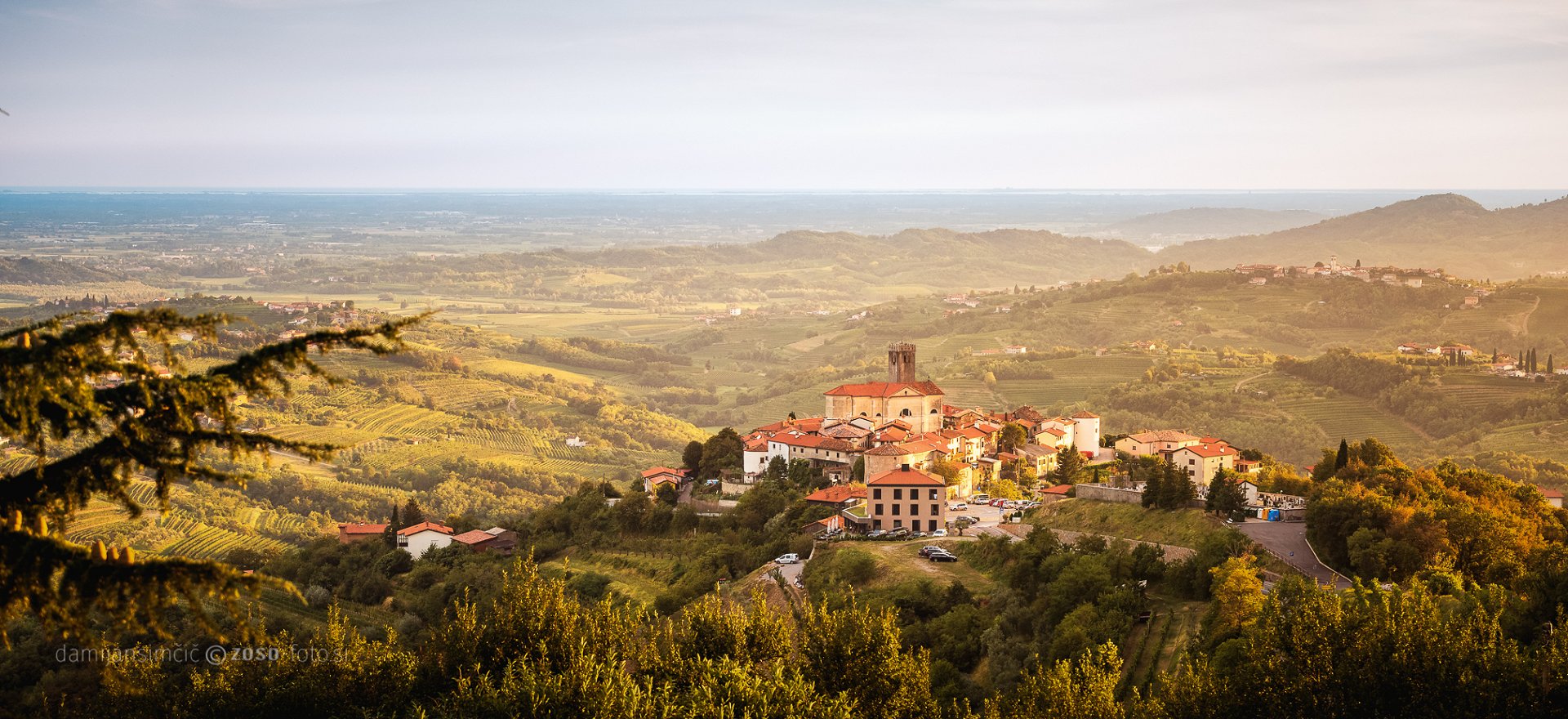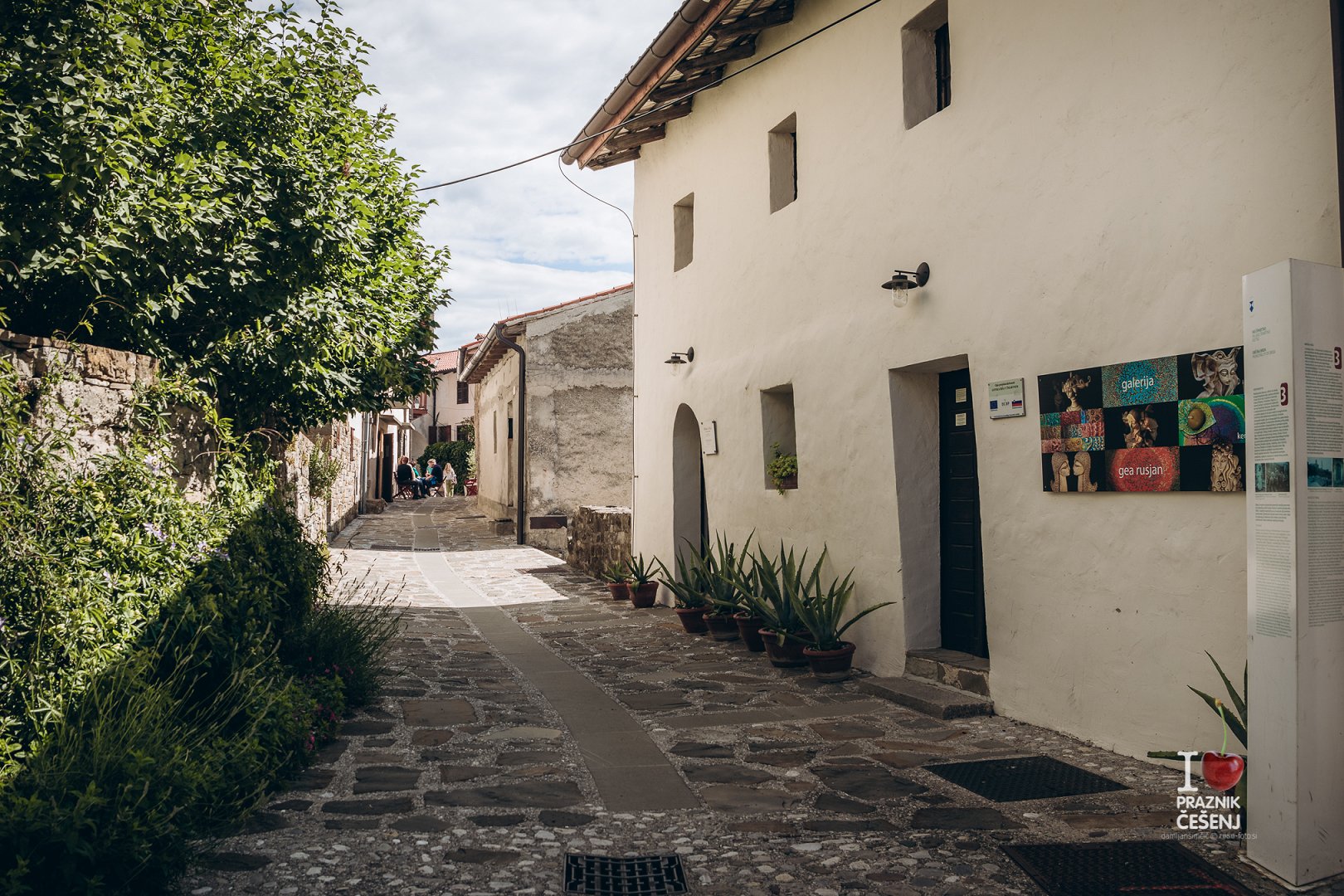ŠMARTNO MEDIEVAL VILLAGE
The picturesque walled village with five preserved towers, perched on a panoramic hill (as the poet Alojz Gradnik would say) like an eagle’s nest, can be seen from every corner of Brda.
The settlement that was probably built on Roman foundations used to be a fortification on the strategic Venetian-Austrian border. Today it is an architectural jewel, a cultural monument, unique as a whole and in numerous details. Between 16th and the second half of 18th century, Šmartno was an important strategic defense post incorporated in the system of fortifications and never taken by the Venetians. The border was defended by contract soldiers coming from far away; many were of Uskok (Croatian) origin. The wall between the seven towers was built in a way that the passages were spacious enough to allow movement of soldiers in different directions. It seems that the settlement had a drawbridge in front of the entrance and was surrounded by a deep moat. Military origin of the village is also testified by a church bell tower and by both squares - upper and lower square - which were intended for gathering of soldiers in case of an enemy assault through the main entrance.
The village derives its name from the Church of St. Martin, the largest church in Brda, with a bell tower which was once a fortification tower. The military character of the settlement began to change in the 19th century, and the professional restoration of the settlement began at the end of the 1970s on the initiative of Emil Smole, then director of the Gorizia Institute for Monument Protection in Nova Gorica.
Today, you can visit one of the exhibitions in Šmartno at the Šmartno House of Culture, and the former furnishings of a simple home with a fireplace at the Brda House. The village comes to life especially during the Brda and Wine and St Martin's Day festivities.
